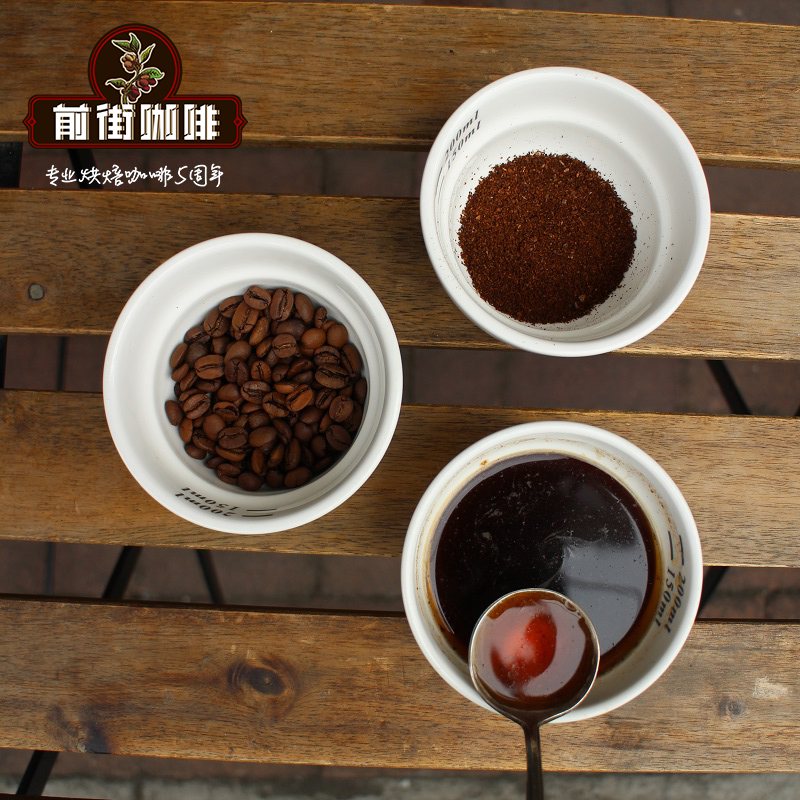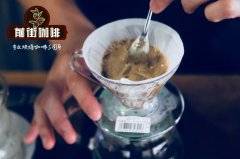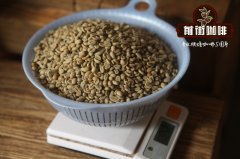What is the new breed of coffee in Barako? What effect can Barraco coffee have on the third wave?

Can the third wave save traditional coffee varieties from extinction?
Barraco coffee has a strong smell and unique flavor and has a history of more than 200 years in the Philippines. Nowadays, it is difficult to find a place in the hearts and cups of the younger generation-but some Filipinos are asking if there is enough room for the third wave.
What is KAPENG BARAKO?
Kapeng Barako is a variety of Liberica species known for its large cherries and unusual flavor. According to the Food and Agriculture Organization of the United Nations, Liberia is a tall tree, 17 meters high. It is also a rare species: estimates vary, but even the most generous states point out that it accounts for less than 2 per cent of global commercial coffee production.
As for Barako, you will find a small amount in the Philippines and other Southeast Asian countries such as Malaysia. The aroma of fennel is recognizable.
For Filipinos, Barraco coffee is a symbol of their country. Its name comes from Tagalog, which means male bull or wild boar, reflecting the fact that it is espresso. Traditionally, it is black or sweetened with musk sugar. For most locals, the drink evokes the memory of their parents drinking it, while the rooster crows at 5 a.m., preparing for another day in the sun.
Capambaraco (KAPENG BARAKO): slow supply death
The island's relationship with Barako dates back 200 years, when it was first planted in the city of Lipa City. In the 1800s, the Philippines was the fourth largest coffee producer in the world.
However, the golden age was short-lived: in 1889, caffeine rusted and rusted, leading to a decline in production. Farmers gave up trees and focused on other crops. In the middle of the 20th century, due to the popularity of instant coffee, demand picked up again, and production picked up again. But Barako production is not: there is no demand and there are too many risks.
Pacita Juan, chairman of the Philippine Coffee Council, told me: "supply has been disrupted. Many farmers cut down their Barako trees and replace them with Robusta because Barako trees take up more land space because of the size and width of their branches. " The Robusta tree requires less maintenance and has higher disease resistance, which means it is easier for farmers to get income security.
Insufficient consumption
The recent increase in the number of local stores and international chain stores has helped increase coffee production in the Philippines. The Philippine Coffee Bureau says the cultivation of Arabica coffee and Robusta coffee is increasing.
But can Barako still have a place in the growing coffee industry? That depends on demand.
Although consumption of Barako in coffee chains such as Figaro Coffee and Lipa Cafe is still low, it can still be purchased locally. Figaro Coffee invested a lot of money to revive Barako, so it launched a "Save the Barako" campaign, which includes promotional programs, new planting, research and targeted marketing.
However, these cafes are exceptions. Barako has not yet been adopted by the third wave of cafes in many cities. Earl Queron, chief barista of the Coffee Empire in Manila, told us: "it was only really popular in the previous generation, because that was everything at the time. They like the strong, bold smell. "
Foreign Barraco
Barraco's unpopular solution may be abroad. Many cafes owned by second-and third-generation Filipinos proudly display the drink. For them, this is one of their legacies.
Jovan and Omar run Barako Bean, a London-based bakery that specializes in purchasing and baking single-source Filipino coffee, including Barako. They are an example of how traditional drinks and the third wave of drinks need not be separated.
Rowena Romulo Romulo recently opened a branch of Romulo Caf é in London, where she stores Barako Bean coffee. When we asked her about Barako, she said, "when we visited eight dozen geese and Cavite and other places, we got this [drink]. It reminds me that Filipinos are famous for their hospitality. "
Ryan Andres, the owner of the Barakok á v é h á z coffee shop in Budapest, Hungary, provides Arabica coffee and Barako. He told us that he had won a huge following among locals and tourists.
However, although he advocates that Barraco Coffee is a world-class coffee, he is still trying to convince everyone. "the younger generation attaches great importance to brand awareness," he said. " "their mindset is that Barako is inferior, just cheap market coffee."
Rowena Romulo had a similar experience. She tells us that she thinks the problem lies in the proliferation of international brands and local chains that yearn for a Western image.
Important Notice :
前街咖啡 FrontStreet Coffee has moved to new addredd:
FrontStreet Coffee Address: 315,Donghua East Road,GuangZhou
Tel:020 38364473
- Prev

Is the hybrid between Arabica and Luodou fine coffee? what does the market think of hybrid coffee?
Changing weather patterns, pests, deforestation and rising temperatures are just some of the environmental factors that threaten global coffee production. It is estimated that by 2050, we may lose as much as 40% of our arable land to grow coffee, making today's coffee industry face unprecedented challenges. One possible solution to the above problems is to switch to new hybrids, these products
- Next

Variety characteristics and stories of coffee beans in Honduras how will the coffee industry in Honduras develop in the future
Honduras may be a relatively small country, but it is an important producer of specialty and general coffee. Depending on which of the six different producing areas you visit, you will find different elevations and microclimates as well as different processing methods used. By 2021, Honduras will become the fourth country to host the producers and bakers forum, which will be the last 10
Related
- Detailed explanation of Jadeite planting Land in Panamanian Jadeite Manor introduction to the grading system of Jadeite competitive bidding, Red bid, Green bid and Rose Summer
- Story of Coffee planting in Brenka region of Costa Rica Stonehenge Manor anaerobic heavy honey treatment of flavor mouth
- What's on the barrel of Blue Mountain Coffee beans?
- Can American coffee also pull flowers? How to use hot American style to pull out a good-looking pattern?
- Can you make a cold extract with coffee beans? What is the right proportion for cold-extracted coffee formula?
- Indonesian PWN Gold Mandrine Coffee Origin Features Flavor How to Chong? Mandolin coffee is American.
- A brief introduction to the flavor characteristics of Brazilian yellow bourbon coffee beans
- What is the effect of different water quality on the flavor of cold-extracted coffee? What kind of water is best for brewing coffee?
- Why do you think of Rose Summer whenever you mention Panamanian coffee?
- Introduction to the characteristics of authentic blue mountain coffee bean producing areas? What is the CIB Coffee Authority in Jamaica?

